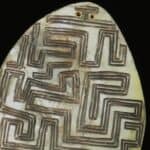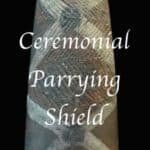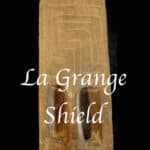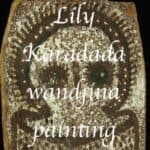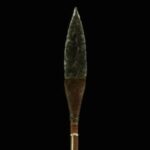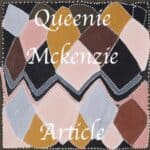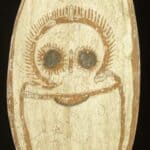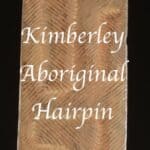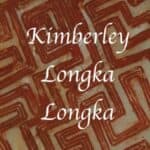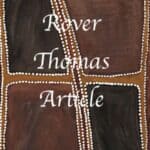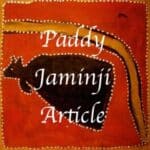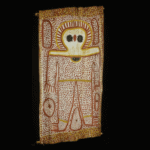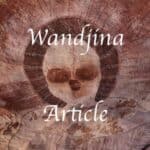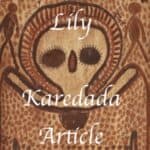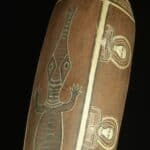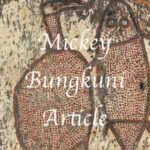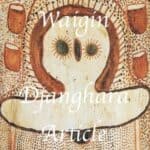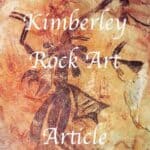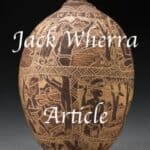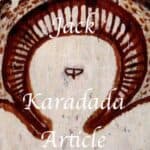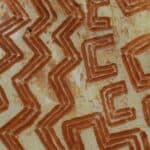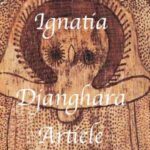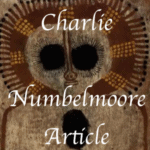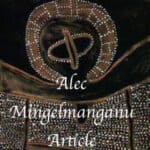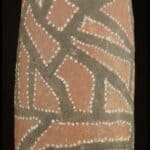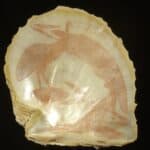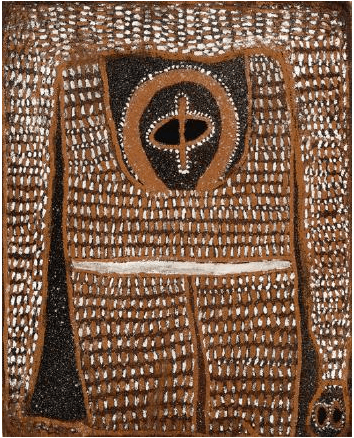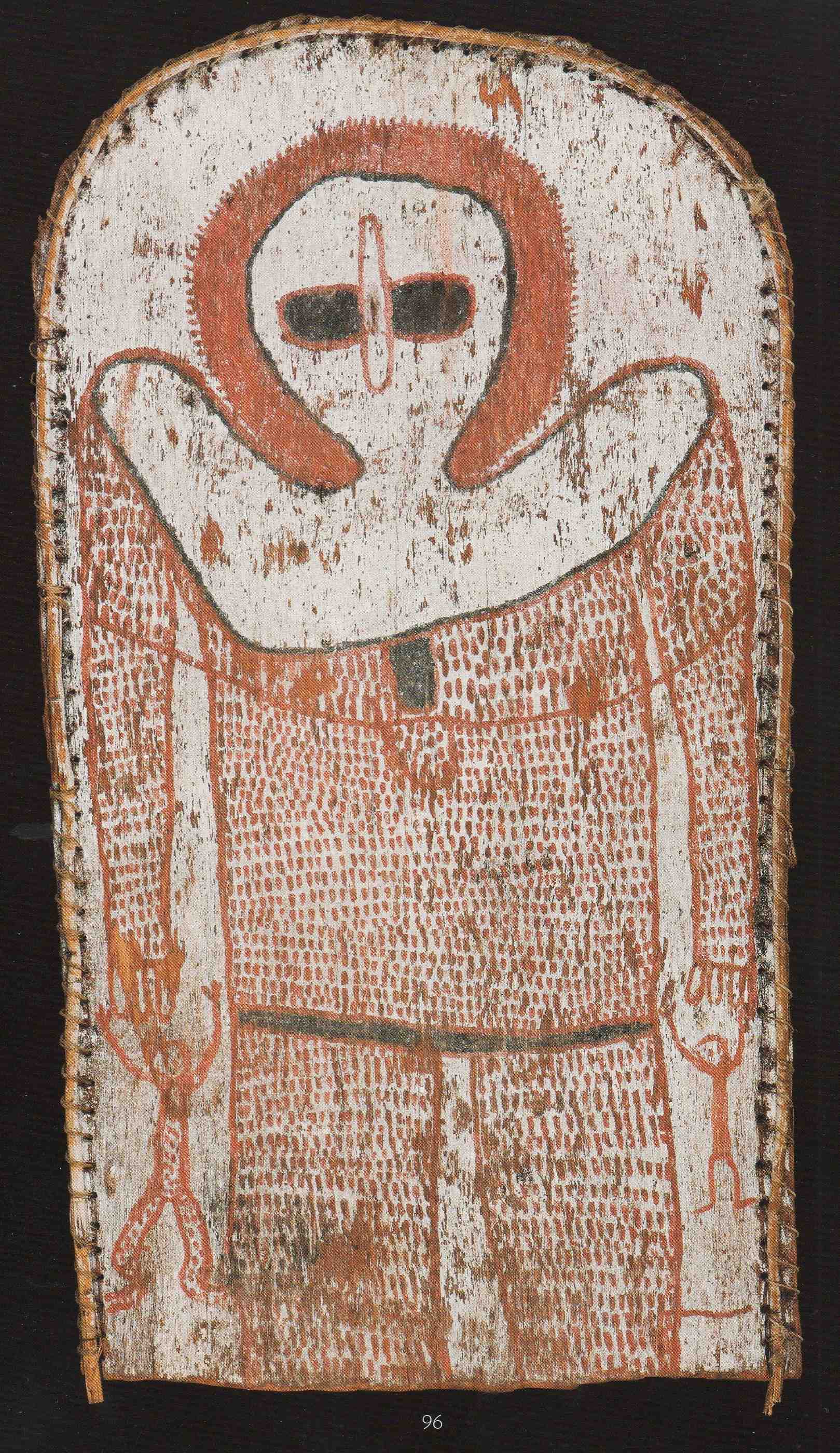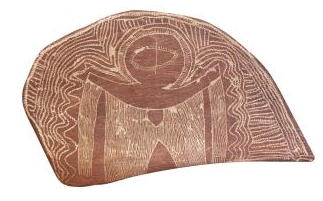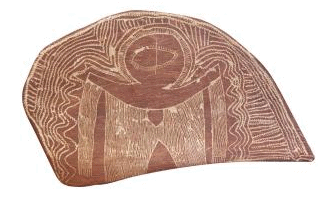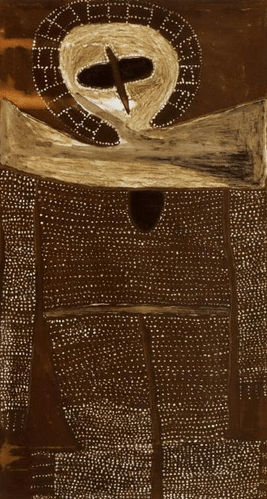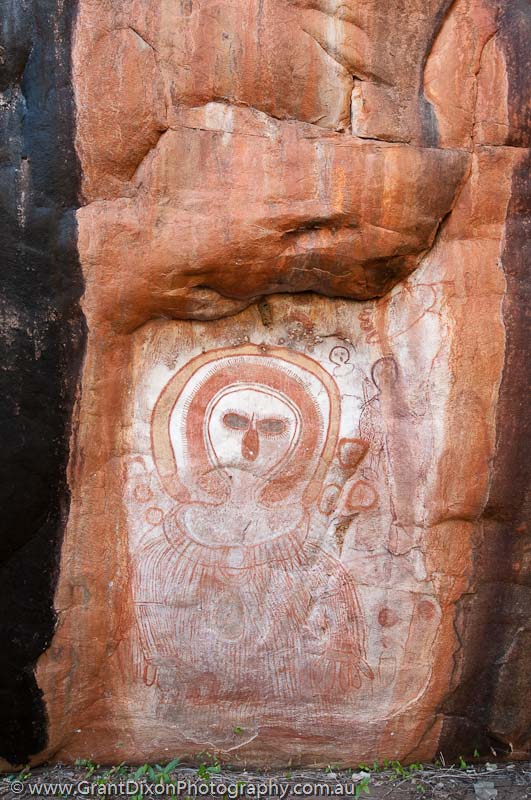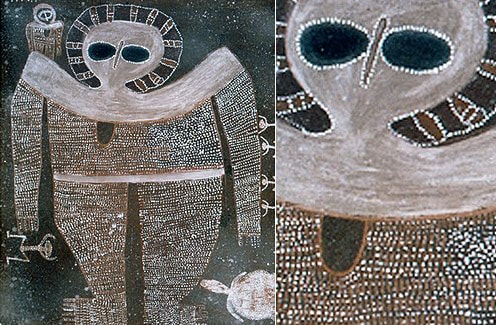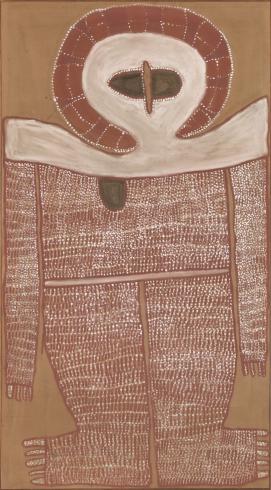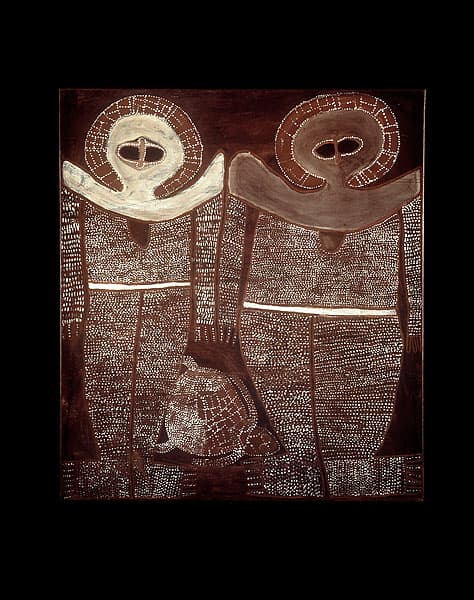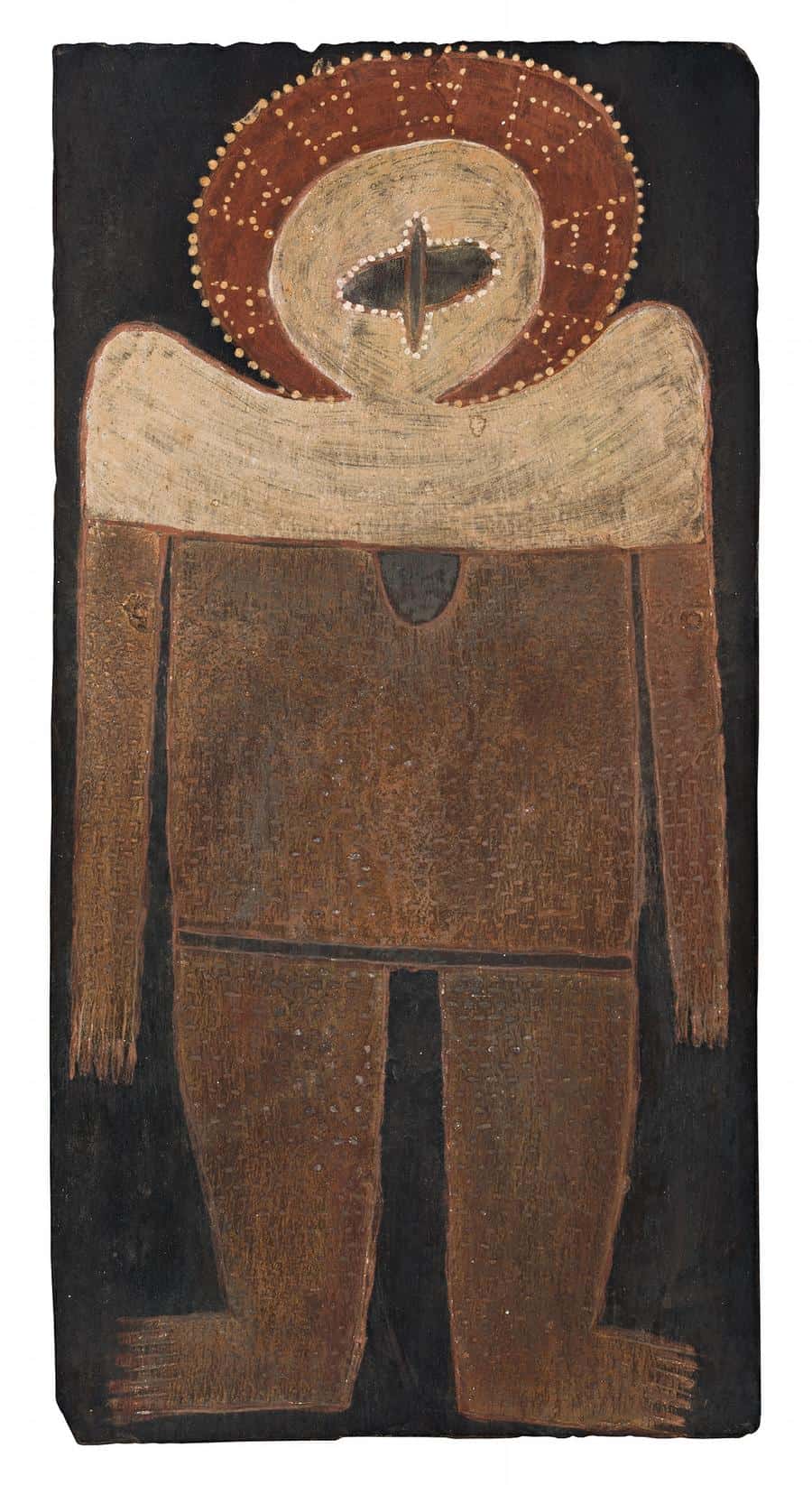Alec Mingelmanganu : Master of the Wandjina
Alec Mingelmanganu is an Aboriginal Artist who painted depictions of Wandjina in the Kimberley of Western Australia. His bark paintings and paintings are some of the most enigmatic and haunting pieces of Aboriginal art ever made for commercial sale. The aim of this article is to assist readers in identifying if their aboriginal bark painting is by Alec Mingelmanganu by comparing examples of his work.
Mingelmanganu went from repainting Wandjina Kimberley Rock art in the 1960s to painting on bark and then canvasses for galleries in the early 1980s.
If you have a Alec Mingelmanganu painting to sell please contact me. If you just want to know what your bark painting is worth to me please feel free to send me a Jpeg because I would love to see it.
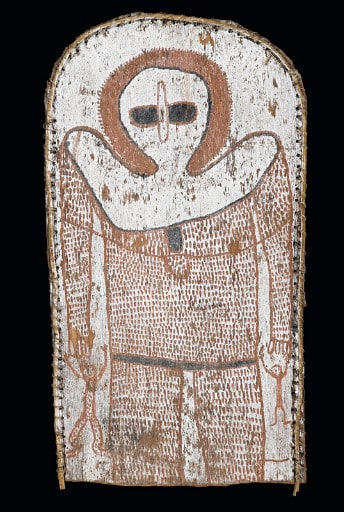
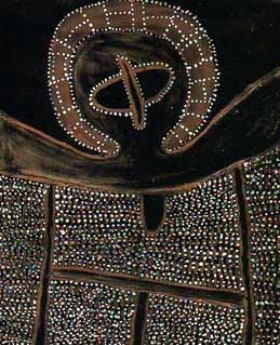
Style
Alec Mingelmanganu’s images of Wandjina can often be differentiated from many other artists by the way he depicts the eyes, as two base to base arches. These eyes are separated by a thin nose. Jack Karedada used a similar technique for the eyes but Jack’s eyes are much smaller. In Alec’s earlier works the eyes are close together and oval in shape. Alec Mingelmanganu’s images of Wandjina often have pointed shoulders. These shoulders are like Wandjina he had seen on a trip to Lawley River with anthropologist Ian Crawford. The shoulders rise well above the neck often level to the bottom of the nose His bark paintings are often on an arch-shaped piece of bark or square. He usually depicts the full figure. His depiction of Wandjina often fills the full width of the canvas or bark giving the impression that this spirit is too large to be contained.Biography
Alec Mingelmanganu lived mainly in and around Kalumbaru in the Kimberleys in Western Australia. He began painting in the late 1960s or early 1970s. Anthropologist Kim Ackerman first noticed Alec’s work during a visit to Kalumburu in 1974. Kim discovered a discarded Wandjina painting used during a ceremony. This Wandjina was later shown during the 1975 Derby Boab Week Art Show under the title ‘Australian Gothic’.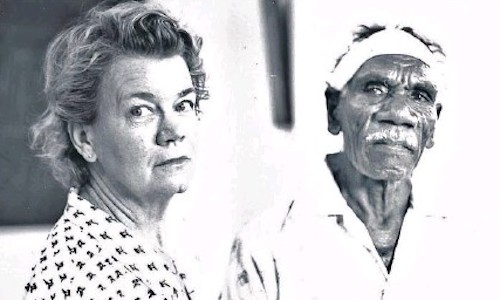
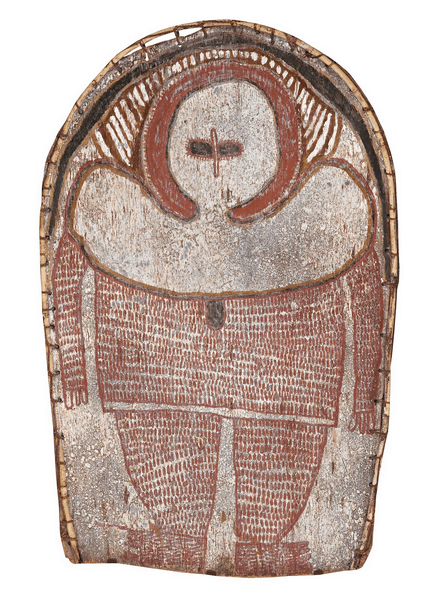
Left: Mary Macha and Alec Mingelmanganu
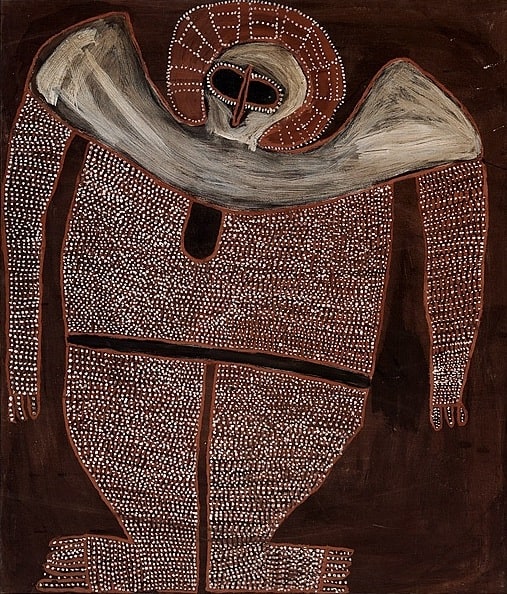
In 1979 Mary Macha began investigating whether traditional ochres worked on canvas. The resulting artworks were the first canvasses from the Kimberley region. Mingelmanganu’s participated in the ochre canvas experiment. Mingelmanganu wanted to replicate the life-size of Wandjina cave paintings. Canvass being larger than bark slabs allowed him to achieve this. His artworks on this larger scale drew immediate attention to his genius.
In September of the following year, Alec had a solo show at the government marketing company’s Aboriginal Traditional Arts in Perth. The four canvases produced for this exhibition are amongst the finest depictions of Wandjina ever made for sale.
Other Kalumbaru artists working at the same time as Alec include Charlie Numbelmoore and Mickey Bungkuni.
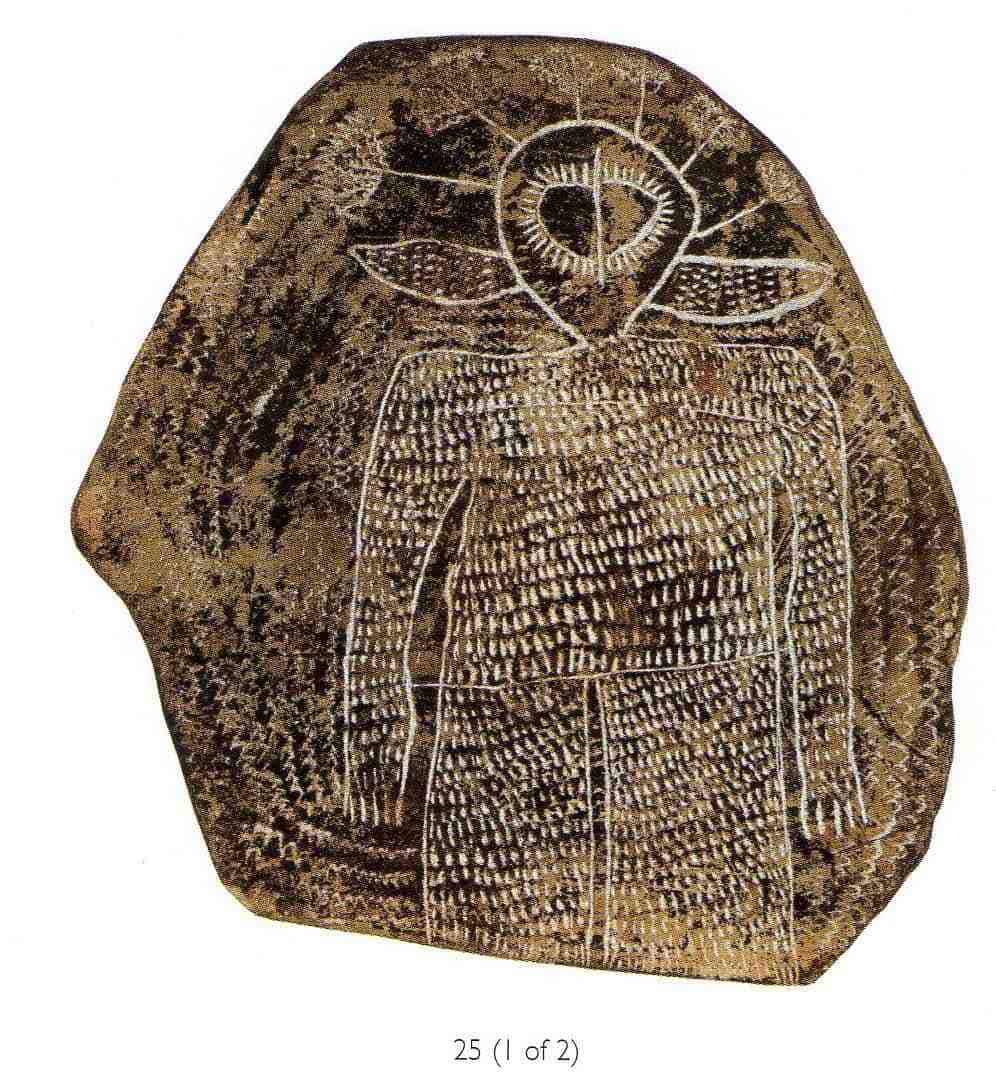
Alec Mingelmanganu also did a few smaller Wandjina on slate. These are still collectible but not as desirable as his paintings. Many of these works on slate do not carry the presence of his paintings.
Alec’s motivation to do Wandjina paintings was to encourage the continuation of cultural practices and religious beliefs. His works have a strong spiritual presence. Wandjina are still painted today but as a pioneer painter, Alec’s paintings have importance in Australian Art History.
Alec Died in 1982.
Mingelmanganu is sometimes spelled Alec Mintjilmanganu or Alec Mijelmarngu
More Kimberley
Artworks and Articles
All images in this article are for educational purposes only.
This site may contain copyrighted material the use of which was not specified by the copyright owner.
Alec Mingelmanganu Bark painting images
The following bark painting are not a complete list of works but give a good feel for the variety and style of this artist.If this post has been informative please take the time and make the effort to share it on social media. By clicking any of the share buttons below you create a link from your social site to this article. Links are what google uses to calculate what information on the web is useful. By sharing this article you are letting google know you found my article / images of some value. Thanks!

